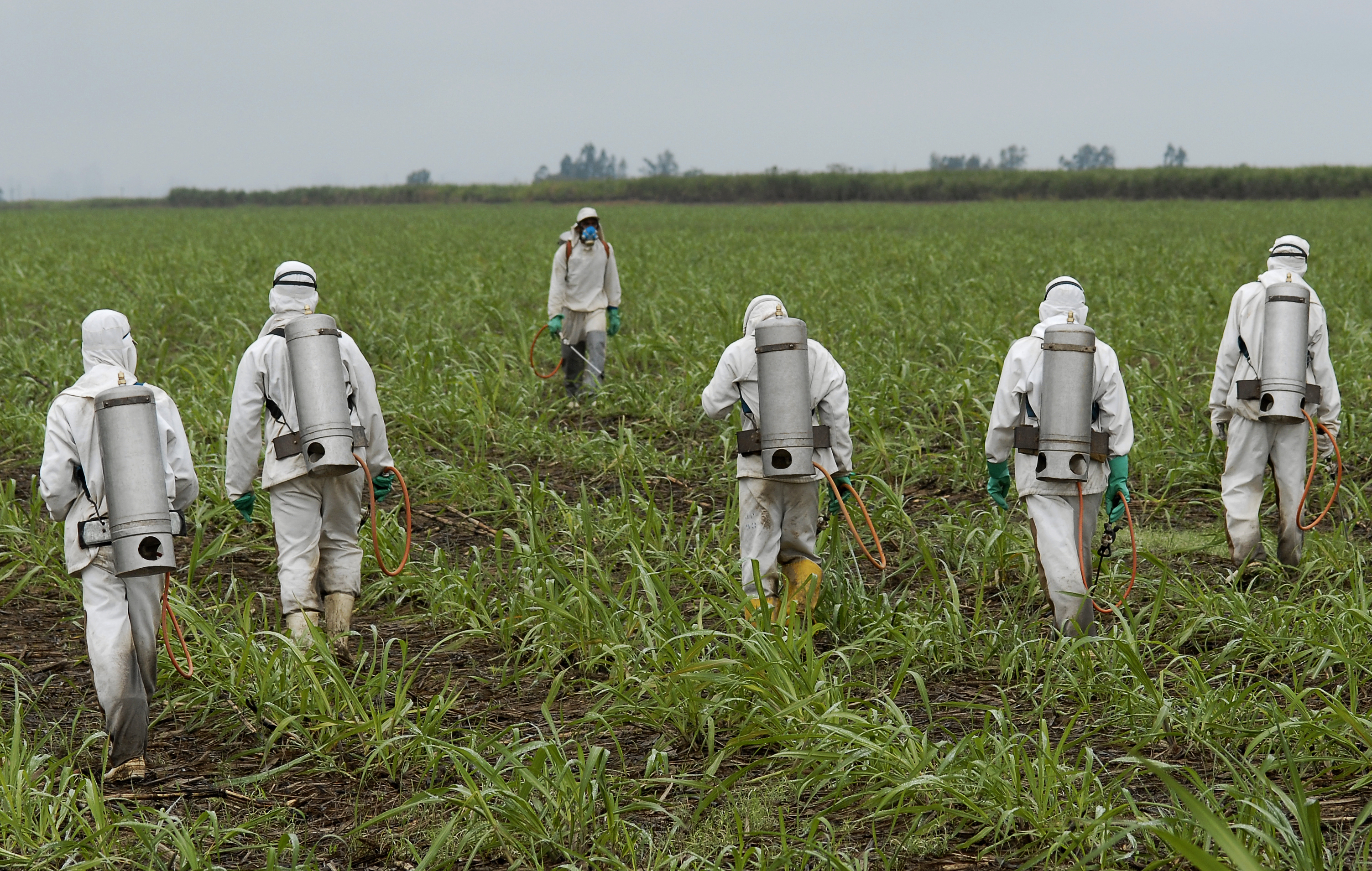 Brandon Turbeville
Brandon TurbevilleNatural Blaze
March 28, 2018
In case anyone might be surprised to learn that the EPA eased regulations on the toxic and volatile herbicide Dicamba after receiving industry research from Monsanto, reports are surfacing that the government agency did just that. Indeed, the agency weakened protections the agency itself set for crops and wildlife habitats after Monsanto presented its own research that showed lower estimates of how far the chemical can drift.
In short, the research that Monsanto provided to the EPA and that the EPA based its revised decisions upon is in conflict with research that was conducted by independent researchers and organizations. No surprise there.
As Johnathan Hettinger writes for Sustainable Pulse and Investigate Midwest,
“The EPA expects that exposure will remain confined to the dicamba (DGA) treated field,” the agency wrote in the final registration approving the use of dicamba in November 2016.
However, drift from dicamba damaged more than 3.6 million acres of soybeans in 2017, according to data from Kevin Bradley, a professor at the University of Missouri.
The drift also allegedly damaged oak trees, wildlife habitats, and other crops, such as vineyards, across the Midwest and South, according to news reports, environmental groups, and complaints filed with state agencies.
Monsanto submitted its research after the U.S. EPA proposed in March 2016 an all-directional buffer zone for dicamba to help protect other crops and wildlife habitats for endangered species. After considering the information, the agency decided to reduce the buffer zone to only a downwind buffer zone, meaning spraying limitations only applied to the downwind edge of a field.
When asked questions by email about Monsanto research on the drift, Monsanto spokeswoman Charla Lord replied in an email: “Thanks for reaching out. You can find information about Monsanto at www.monsanto.com.”
After the EPA approved new versions of dicamba in 2016, use of the chemical increased heavily. It was then allowed to be sprayed on cotton and soybean crops genetically engineered to withstand the chemical.
Hettinger writes,
An agency spokesperson said it was “standard practice” to provide a proposed regulation to the public for comment and then follow it with a final decision that incorporated new information received during the comment period.
“EPA received new information that altered the final decision,” said Robert Daguillard, a spokesman for the agency.
After reports of widespread damage last year, however, the U.S. EPA increased regulations on dicamba in October, naming it a restricted use pesticide and limiting the conditions in which it could be sprayed. The buffer zone was not changed. Many states have issued additional restrictions.
In its March 2016 registration, the agency proposed a buffer zone to provide protection for “sensitive areas,” which are areas that host species that are protected under the Endangered Species Act.
The proposal had a 100-foot all-direction buffer, meaning that applicators could not spray dicamba within 100 feet of the edge of a field. If dicamba is sprayed at higher concentrations, the buffer would be increased to 220 feet.
The agency found that the buffer zone was necessary because of “past experience with other dicamba formulations and associated spray drift incident reporting,” according to the proposed registration.
In the EPA’s final registration, which was published on November 9, 2016, the agency changed the all-directional buffer to a 110-foot downwind buffer, meaning that applicators could not spray dicamba within 110 feet of the downwind edge of the field.
“Monsanto responded to these concerns with an additional submission post-proposal that acknowledged the long-recognized volatility of dicamba acid and described measurements of the volatilization in the different formulations,” the agency’s final registration said.
Between the two registrations, Monsanto submitted studies conducted in Georgia and Texas, which were states that received zero complaints about dicamba in 2017. Those studies found that drift and volatilization was minimal. Based on those studies, the EPA found “the 110-foot omnidirectional buffer for volatilization is no longer warranted.”
Daguillard, the EPA spokesman, pointed out that the Federal Insecticide, Fungicide, and Rodenticide Act. which regulates pesticides, requires companies to perform safety studies.
“Thus, the pesticide companies, rather than the taxpayers, shoulder the cost of performing the safety studies on pesticides required by EPA,” he said. “EPA, however, has extensive requirements in place to ensure that the data generated by pesticide companies are scientifically sound and provide sufficient information to assess the potential risks of a pesticide.”
He said that EPA scientists rely on more than just these studies, including “other governments, academia, and published scientific literature.”
“EPA maintains a transparent, public process for assessing potential risks to human health and the environment when evaluating pesticide products,” he said.
University of Arkansas research that was conducted in 2017, however, found that dicamba is able to drift up to 220 feet. That’s more than double the buffer zone set up by the EPA.
The Illinois Department of Agriculture, BASF, Monsanto, and the EPA were all well aware that dicamba could endanger areas that hosted wildlife and endangered species. This was revealed in an email by Jean Payne who was President of the Illinois Fertilizer and Chemical Association, which is made up of pesticide applicators and chemical companies.
Hettinger quotes the email:
“Roadside ditches, grass field borders, treelines, or shrubs/bushes in field borders, etc. ARE sensitive areas,” Payne wrote, saying she had confirmed that information with Dan Kenney, branch chief of the herbicides division of the U.S. EPA. “He said they had to do this to meet Endangered Species demands (from lawsuits) put upon them with regard to the issuance of these new labels.”
Unfortunately, the history of the EPA and the whole of the American regulatory system is a history of coordination with Big Ag to the benefit of the industry and the detriment of the American people. If anyone is surprised by the news that the EPA relied on industry science to liberalize its standards on Dicamba, they shouldn’t be.
This article (EPA Relaxed Dicamba Regulations Following Monsanto Research, Records Show) was created by and appeared first at Natural Blaze. It can be reshared with attribution but MUST include link to homepage, bio, intact links and this message. IMAGE: Center for Food Safety
Get a nifty FREE eBook – Like at Facebook, Twitter and Instagram. Can republish but MUST include author name + link back at the TOP, links and bio intact. Must include this message!

Brandon Turbeville – article archive here – is an author out of Florence, South Carolina. He is the author of six books, Codex Alimentarius — The End of Health Freedom, 7 Real Conspiracies,Five Sense Solutions and Dispatches From a Dissident, volume 1 and volume 2, The Road to Damascus: The Anglo-American Assault on Syria,and The Difference it Makes: 36 Reasons Why Hillary Clinton Should Never Be President. Turbeville has published over 1,000 articles dealing on a wide variety of subjects including health, economics, government corruption, and civil liberties. Brandon Turbeville’s podcast Truth on The Tracks can be found every Monday night 9 pm EST at UCYTV. He is available for radio and TV interviews. Please contact activistpost (at) gmail.com.
No comments:
Post a Comment
Note: Only a member of this blog may post a comment.